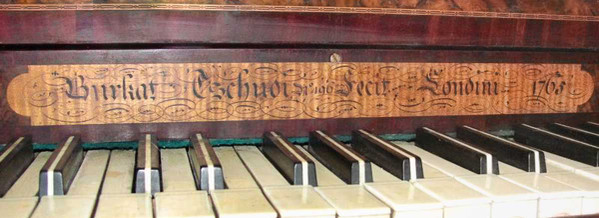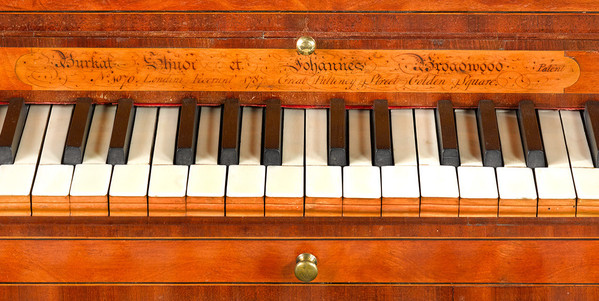Burkhard Shudi
Настоящее имя: Burkhard Shudi
Об исполнителе:
Burkat Tschudi, or Burkhard Shudi (13 March 1702, Schwanden, Glarus, Switzerland — 19 August 1773, London, England) was a British harpsichord maker of Swiss origins active in London between circa 1729 and 1771. His son-in-law, a renowned piano maker, John Broadwood, subsequently inherited Shudi's business. Name variations: Burkhardt Tschudi, Burkhart, Schudi, Tshudi. In 1718, sixteen-year-old Burkhardt relocated to England, where he briefly worked as a lumber joiner before apprenticing with Harmen Henrik Tabel (ca.1672—1739), a renowned German maker who lived and worked on Oxendon Street, Piccadilly. It's unknown when Shudi established his first independent workshop in London, with the earliest extant harpsichord dated 1729. Around that time, he married Catherine Wild (1704—1758), who immigrated from the same Swiss canton; they had eleven children. Shudi worked under the auspices of the Prince of Wales, as indicated by a Plume of Feathers on Burkhard's shop sign (in contrast to his competitor, Joseph Kirkman, who worked under the King's Arms patronage). Like many other instrument makers of the time, Burkhardt Shudi mainly followed the Flemish tradition, drawing inspiration from Ruckers; he introduced several notable innovations to the harpsichord design, such as a "machine stop" (engaged by a hand-stop and operated by a foot pedal to reduce each manual’s registration gradually) or an extended lower range, bringing his compass down to CC by the mid-1760s. Shudi also invented the Venetian swell, similar to the organ's expression pedal, and built some hybrid instruments, such as "claviorgans" (a joint harpsichord and organ). His clientele included King Friedrich der Grosse, George III (1738—1820), painter Thomas Gainsborough, composers Muzio Clementi, Joseph Haydn, and Georg Friedrich Händel. (A renowned modern US harpsichord maker, Frank Hubbard (1920—1976), once wrote that Shudi's and Kirkman's work represents "the culmination of the harpsichord maker's art […] for sheer magnificence of tone, reedy trebles and sonorous basses, no other harpsichords ever matched them.") Shudi had several apprentices and assistants. (According to Charles Burney's article in Rees's Cyclopædia (1918), a German maker named "Zumpé" long worked under Shudi, presumably Johannes Zumpe, but there's no other documentary evidence to confirm this claim.) In mid-September 1761, Shudi hired a promising apprentice, John Broadwood (1732—1812), who married Burkhard's youngest daughter Barbara (1748—1776) eight years later and became his father-in-law's name partner by late 1769; the renewed nameplates now read "Burkat Shudi et Johannes Broadwood." Two years later, Burkat Shudi retired at 69, bequeathing his business and the workshop lease to his son, Burkat Shudi, the Younger (1737—1803), his nephew Joshua Shudi (1739—1774), and John Broadwood. Sometime by the late 1780s, "Broadwood & Sons" merged the remnants of Shudi's workshop.




